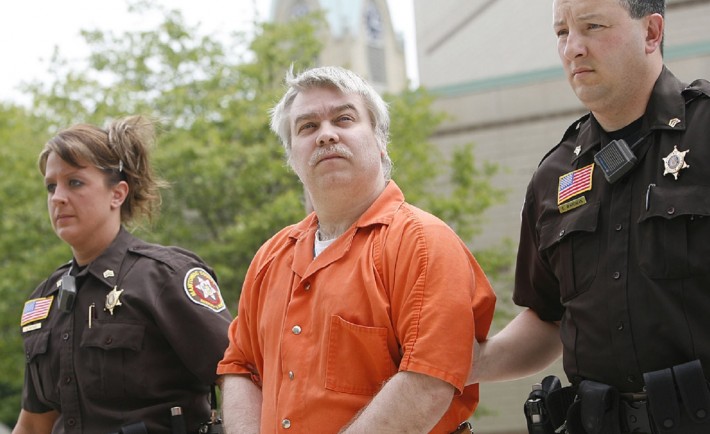A Netflix documentary series has been making headlines recently, both because it’s hugely popular and because it has the (remote) potential to free a convicted murderer. Here’s why this is all very good news.
(Note: I haven’t seen the entire series yet, so I’ll mostly be discussing the program in somewhat broad terms. And the specifics of the case are a matter of public record. Still, if you haven’t seen the show yet and want to go into it “cold,” spoiler alert!)
1) Hooray for long-form investigative journalism!
As I wrote in my book Think, American investigative journalism has largely disappeared in the last decade, as tabloid journalism and clickbait has ascended. As a result, we know far too much about the Kardashian’s love lives and far too little about international stories like concentration camps in Myanmar or even critical domestic issues like mass incarceration.
So I can only cheer when an in-depth series like HBO’s The Jinx digs into the considerable evidence against killer Robert Durst, or the riveting podcast Serial examines the highly questionable murder conviction of a high school student (Season 1) or the case against US Army deserter Bowe Bergdahl (Season 2). Perhaps our attention spans have not been completely eviscerated by TV and the web. Perhaps we will still sit for the long haul, hear the evidence, the full case, in all its messiness. Not only is this better for our brains, it’s what justice requires.
In the case of Making a Murderer, the filmmakers took ten years to put together the ten-part series. Its success will hopefully spur others to take a deep dive into other cases that deserve attention. This is a victory for both journalism and the justice system.
2) The show exposes at least one horrific injustice against Steven Avery.
Avery served 18 years in prison for a rape he did not commit. We know this for a fact, because he was exonerated by DNA evidence. Worse, Making a Murderer makes a strong case that law enforcement had reason to believe that another man committed the crime at the time they were prosecuting Avery, and again years later when the true rapist was caught for another assault and Avery was languishing in prison, ten years into his term. Even though his lawyers were challenging his incarceration at the time, authorities appear to have been focused on keeping the wrong man behind bars, a shocking travesty.
Heartbreakingly, the show highlights the sad, predictable consequences: the loss of his marriage, his inability to father his five children, his elderly mother’s valiant efforts to visit him in the various facilities he was moved to. Not to mention the slow drip, drip, drip of his young adulthood wasting away in a state-sponsored cage.
3) The heroes of Making a Murderer are Avery’s defense and civil attorneys.
Too often defense attorneys are depicted as lowlifes, trying to help guilty people go free. In reality criminal defense lawyers serve an important function in our system, requiring the state to meet its constitutional duty to prevent each and every element of a crime against an accused beyond a reasonable doubt. Civil attorneys suing the state, as Avery’s did after his wrongful incarceration, are frequently depicted as predatory ambulance chasers, just in it for a buck. But plaintiff’s personal injury lawyers are often muckrackers, as Avery’s clearly were, exposing corruption.
The Netflix series shows the dogged fight Avery’s attorneys made, year after year, fighting for his freedom and then for him to be compensated for the wrong. Hopefully, this will change some minds about the vital work done by these professionals.
4) Avery may or may not have committed murder, but the issue deserves a second look.
After being exonerated, in the middle of his lawsuit for wrongful incarceration, Avery was arrested for murder. As with the first crime, Avery steadfastly maintains his innocence. Nevertheless, based on a fair amount of DNA evidence and the testimony of his teenaged nephew, Avery was convicted of the murder of Teresa Halbach and sentenced to life in prison without the possibility of parole.
Could he have been wrongly convicted a second time?
The series makes the case that he was, on the theory that local law enforcement was out to get Avery in light of the incompetence and cover up his civil case was exposing, while prosecutors have recently spoken out about evidence left out of the series that they say confirms his guilt. I haven’t finished watching the entire series, so I’m not taking a position on this. But there is certainly enough here to require that in the interests of justice a thorough review of the case be conducted. We cannot allow a potentially innocent man to spend his life behind bars.
5) Making a Murderer is not afraid of ugly facts about Avery.
While the show advocates for Avery’s release, it does not shy away from showing us his dark side: the time as a young man he set a cat on fire, causing it to ignite; another time he ran a female cousin off the road and pointed a gun at her; a burglary conviction. Avery, with a low IQ of just 70, was at best a confused, poorly functioning young man, at worst a psychopath. But, one who was wrongly convicted of rape.
Yet once released, and in a happy new romantic relationship, why would he commit murder? Then again, why does anyone? Homicide is inherently illogical. Anger, greed, poor impulse control are the usual reasons. Avery certainly had the capacity to do so. But, as the series amply demonstrates, the state also had the capacity to frame him.
There are two real sides in the debate over Making a Murderer, and kudos to filmmakers Moira Demos and Laura Ricciardi for trusting us with the story in all its confounding complexity.


